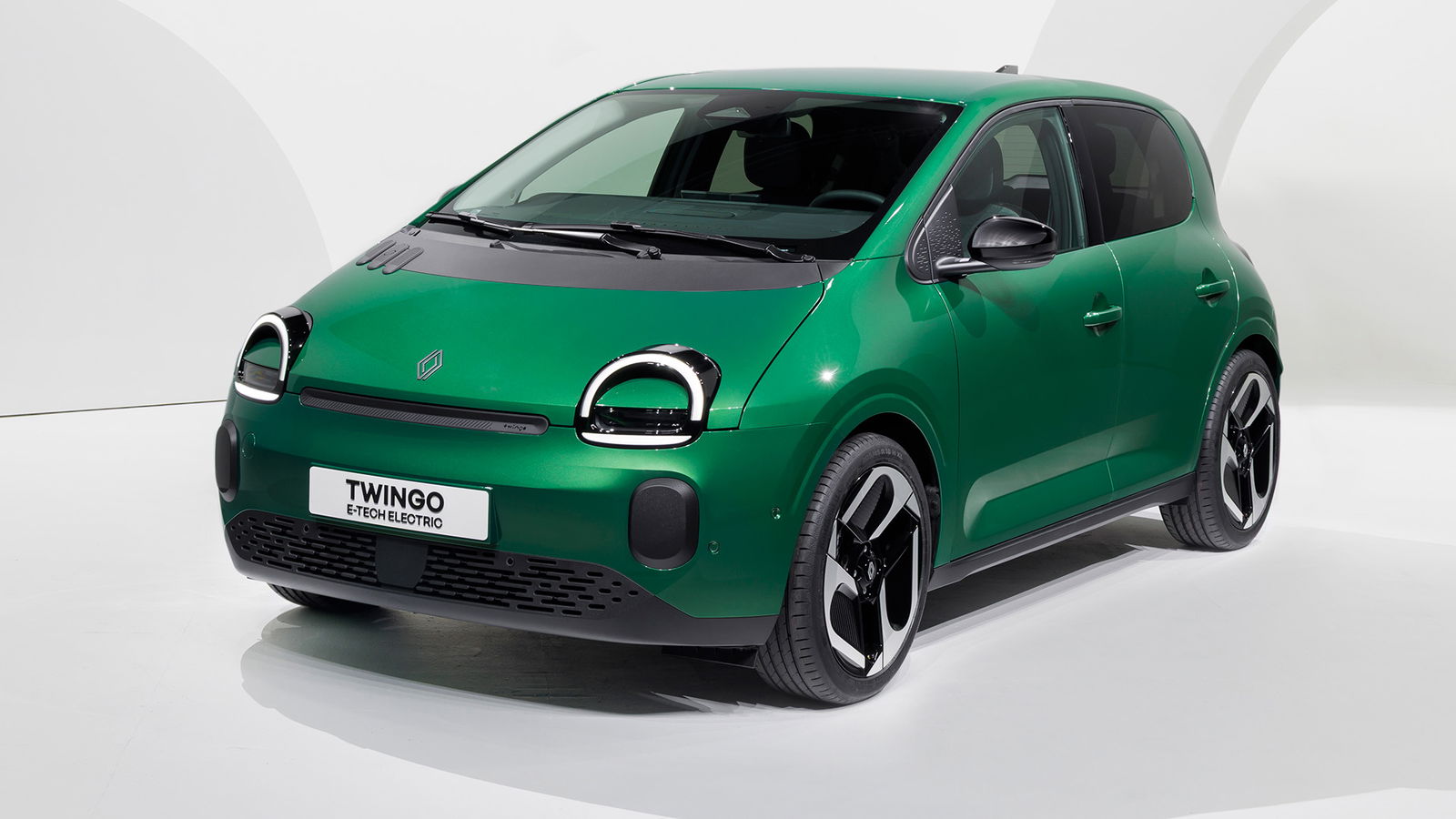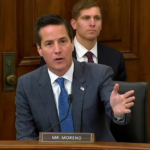Here in the UK, we were denied the charms of 1993’s original, frog-eyed Renault Twingo, despite it being a regular, panel-damaged sight across the rest of Europe to this day. Now, though, it’s been reborn as an electric car for the nameplate’s fourth generation, and isn’t it just utterly adorable? And there’s more good news – this time, we’re not missing out in Britain.
Fast-tracked from 2023’s concept to a full production car in just 100 weeks, it joins the reborn 4 and 5 as the third and final member of Renault’s trio of retro EVs, and it’s based on a shortened version of the same Amp-R small platform as its bigger siblings.
Visually, it almost perfectly copies the monobox proportions of the original car, and given the general swelling of all things automotive, it’s not that much bigger either: at 3789mm long and 1720mm wide, it’s just 90mm wider and around 350mm longer than its inspiration. Despite that, top-spec cars get chunky 18-inch alloys, lending them proper concept-car-on-the-road looks.
The details are faithful, too. The Mk1’s distinctive rounded headlights are reinterpreted as some very 2026-spec circular LED running lights, with the main headlights sneakily concealed within them. The three little bonnet vents are also carried over – no longer needed for cooling, one of them now opens up for topping up the washer fluid.
Perhaps the only detail that hasn’t made it across are the original’s circular door handles, replaced by more conventional items as the Twingo’s now a five-door car. One particularly Parisian new feature, meanwhile, is the plastic bumper overriders, designed to deal with the more relaxed attitude to parallel parking found across the Channel.
Power is drawn from a 27.5kWh battery. UK specs are TBC, but in Europe, it’ll come with 6.6kW AC charging as standard, while an optional Advanced Charge Pack will bump that to 11kW and bring 50kW DC charging capability too. At the latter rate, going from 10 to 80 per cent will take as little as 30 minutes, says Renault. Despite the small-ish battery – a deliberate move to keep overall weight down to a low-for-an-EV 1200kg, it’ll still do a quoted 163 miles of range.
Drive is handled by a single front-mounted electric motor, making 80bhp and 129lb ft of torque. That makes for a modest 0-62mph time of 12.1 seconds, but more importantly, for the traffic light sprints the Twingo’s likely to be involved in, 0-30mph takes around 3.8 seconds. Top speed has been sensibly capped at 81mph to stop it chewing through range too quickly, should you need to take it on the occasional motorway jaunt.
Underneath, it gets the same front axle as the 5 and 4, but the multi-link rear setup from those has been replaced by a simpler torsion beam system, adapted from the Captur crossover. This, says Renault, is to save on both weight and cost.
It’s on the inside, where lots of the really clever stuff’s been done. Some of it is familiar from other cars from across the Renault empire, like the Google-based infotainment system, but while the 5 and 4 have a fundamentally similar architecture to one another, the Twingo gets a whole new dash.
The body-coloured inserts are easily swappable if you fancy a change of surroundings, and Renault’s developed a vast range of accessories, ranging from a storage bag that doubles up as a clip-in front armrest to a neat elasticated parcel shelf that can fold up then expand like a tiny pop-up tent. It’s also the first Renault-branded car to adopt the YouClip system, first introduced on the new Dacia Duster, bringing a modular system for clipping all manner of things to.
The original car’s sliding rear bench has been reborn, too, with both seats able to slide back and forth individually via straps in the boot. That helps boot space go from 250 litres with the seats all the way back to 360 with them pushed as far forward as they’ll go (hopefully when there’s nobody sat back there). Fold them down, and boot space rises to over 1000 litres, and there’s a 50-litre underfloor storage cubby.
The new Twingo’s battery is made by CATL in China, but everything else is put together at the factory in Slovenia that’s been turning out Twingos since the second-gen car. That could help it with eligibility for the UK’s EV grant, but even if it doesn’t meet the requirements, Renault says it’s targeting an entry point of under £20,000 when it goes on sale here late next year, or possibly in early 2027.
That’ll make it one of the cheapest EVs around, and it’ll need to be as it joins a swelling category of friendly-faced electric city cars. There’s already the Hyundai Inster, and the kei car-based Honda Super-N is UK bound next year. Then, a production version of the VW ID Every1 concept will arrive in 2027.
The Twingo won’t have things all its own way, then, but we already know Renault’s rather good at the whole small retro EV thing. And who could possibly resist that little face?
Get the latest car news, reviews and unmissable promotions from the team direct to your inbox
For more information see our Privacy Policy
Mike joined Car Throttle as a Staff Writer at the start of 2024, a role that sees him driving the news desk, as well as reviewing cars and (often unsuccessfully) pitching features on obscure Italian hatchbacks.
Get the latest car news, reviews and unmissable promotions from the team direct to your inbox
For more information see our Privacy Policy
© Crash Media Group Ltd 2025.
The total or partial reproduction of text, photographs or illustrations is not permitted in any form.












